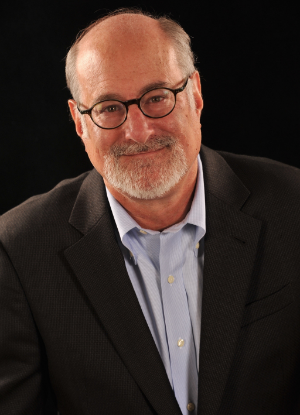
Steve Goldstein’s Amplifi Media works with media companies and podcasters in developing audio content strategies. This column was originally published in Radio Ink Magazine. Goldsteing writes frequently at Blogstein, the Amplifi blog.
Podcasting’s most important event, Podcast Movement, took place a few weeks ago in Philadelphia. Four years ago at this same event, I counted six radio people in attendance. This time, among the 2,300 attendees were hundreds of people from virtually every major commercial radio company. Yet, with all of commercial radio’s new interest in podcasting, radio is, by any measure, responsible for very little of the overall consumption of podcasts.
A recent check of the Apple Podcast chart has only two podcasts produced by broadcast companies in the top 100, and only five in the top 200. Two are time-shifted radio programs: Dave Ramsey and iHeart’s Breakfast Club. The other three are original podcasts developed by iHeart’s podcast production team.
Public radio, which includes NPR and other producers, has been at this for years with a combination of time-shifted and original content. Currently they have about 20 of the top 50 podcast titles, though that number has fallen as more content comes from various new pureplay producers.
While most say it is early innings for this young business, there is already an abundance of podcast content out there — about 550,000 titles. That’s more podcasts than the Internet Movie Database (iMDB) has movies.
A good deal of that content is from hobbyists; for example, there are 27 podcasts about woodworking. But any way you slice it, there’s a tremendous amount of podcast content available and about 1,000 new titles (not episodes, titles) are added weekly.
How will commercial radio power through, and, more significantly, what is hindering the progress of commercial radio in podcasting?
Podcasts are not the same as broadcasts. There is a widespread but false assumption that broadcast audio migrates easily to downloaded audio. Our experience is that each media platform is different. What works on TV is different from what works on YouTube, yet they are both video experiences. In a similar way, podcasts are different from terrestrial radio. For example, listening to and forwarding through a three-hour morning show dodging dated news, traffic, and a lot of mediocre content is a painful consumer task. Curation is essential. Nuance matters — a lot. We’re finding a similar pattern in our work with smart speakers. Different types of content connect and resonate on smart speakers.
Who’s going to make all this stuff? Looking down the hallways at the average radio station, you’ll see there aren’t a lot of extra bodies. Everyone is doing three jobs. Ask someone to take on a significant and time-consuming new task results in the “Are you kidding?” eye roll. Like anything else, success is the result of focus and measurement. Who will focus on podcasting in each station, and do they understand the medium? Or is this like sticking the kid in the office with web responsibilities, as so many stations did years ago?
DJ’s aren’t trained for this. Most air personalities are great at what they’ve been trained to do, connecting with an audience in brief snippets, but does that mean they are qualified to do a 30-minute podcast on health or motherhood? Many stations assume they can take their talent and easily build original podcast content around them. So far, the results are sketchy. A few good ones include Enough About Me from WEEI/Boston’s Kirk Minihane, and Rachelle Belle of KIRO/Seattle has seen success with Your Last Meal. We’re seeing more, but many radio organizations realize that these can be time-consuming and difficult to leverage.
Podcasts can be hard to monetize. Building worthwhile podcasts and teaching the audience how to find and listen to them is a process that can be antithetical to the “We’ve got to make the June budget” environment. R&D plays a big role.
Fear of cannibalization. Most radio programmers are working harder than ever to levitate Persons Using Radio levels and TSL against the numerous outside forces and choices ranging from Spotify to owned music and podcasts. Many view podcasts as accelerating radio’s decline.
Innovation is critical today as brands learn to meet customers where they are. Starbucks built a ready-to-drink business of in-grocery-store sales. It has taken them 10 years, but today it accounts for 12 percent of their business. If you build it, they will likely come — but it may not be by Tuesday.
One of radio’s great assets is its powerful megaphone to drive traffic, but ahead of that is the development of quality content that people will seek out and download. The bar is higher than just punching around the radio dial.
What works in every content-first setting is the development of difficult-to-duplicate, compelling programming. That’s the place for commercial radio to start on its podcast quest.

Great! Thanks for sharing the information. That is very helpful for increasing my knowledge in this field
Great! Thanks for sharing the information. That is very helpful for increasing my knowledge in this field
Great! Thanks for sharing the information. That is very helpful for increasing my knowledge in this field